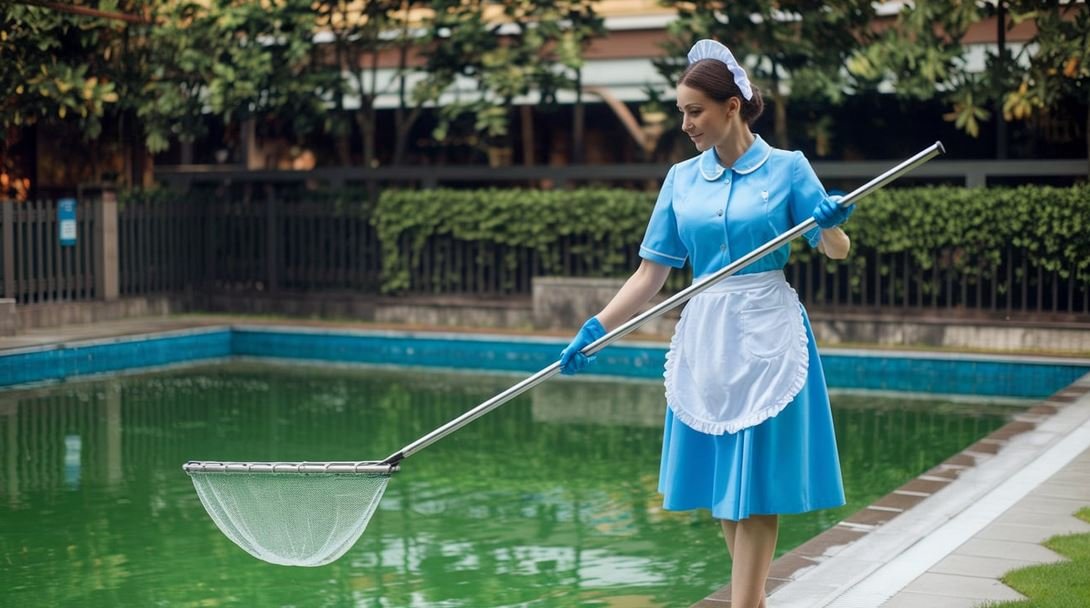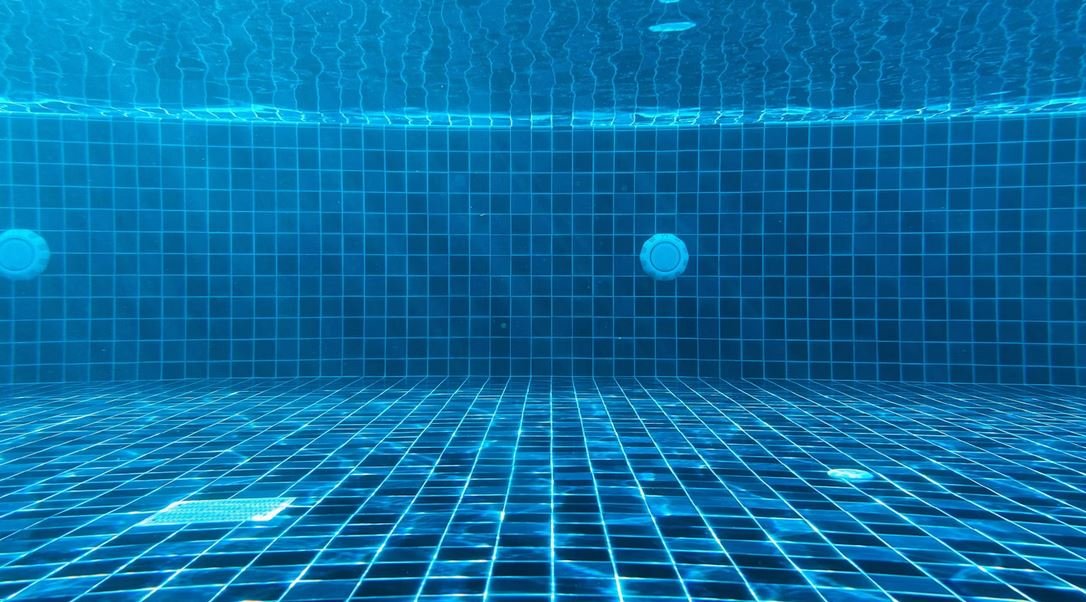Algae In Pool Filter (Easy Cleaning Guide)
Got a pool that’s looking a little green around the edges?
Algae can sneak its way into your pool filter and cause all kinds of headaches—clogging it up and making your water less than inviting.
The good news is, cleaning algae out of your pool filter isn’t as complicated as it might sound. In fact, with just a few simple steps, you can get everything back in shape and keep your pool crystal clear.
In this post, I’ll show you how to get rid of algae in pool filters.
What Causes Algae In Pool Filters?
Algae in your pool filter happens when the filter isn't doing its job properly.
In most cases, it’s because the filter's not catching all the debris, dirt, and algae spores floating around in your pool water. It could also be because your pool’s chemicals are out of balance, which gives algae the perfect opportunity to grow.
Some filters, especially sand filters, are prone to algae buildup if they’re not regularly cleaned or maintained.
Algae is sneaky. It can grow in the pool itself, and then as the water circulates, the algae ends up getting trapped in the filter. If the filter doesn’t catch it all, the algae can continue to thrive.
Also Read: Cleaning Pink Mold On Humidifier
How To Get Rid Of Algae In Pool Sand Filter
Okay, so now that we know why algae ends up in the filter, let’s get to work on fixing it.
The good news is that cleaning it out isn’t as tough as it sounds. If you follow these steps, your pool should be algae-free in no time:
#1. Backwash The Filter
The first thing you should do is backwash your sand filter.
This helps get rid of a lot of the gunk, including algae, that’s been trapped in there. Backwashing is basically reversing the flow of water through the filter to flush everything out.
To backwash, turn off the pump and switch the valve on your filter to “backwash.” Then, turn the pump back on, and let it run for a few minutes. You’ll see all that dirty water and debris coming out of the waste line.
Keep an eye on the water until it runs clear. Once that happens, turn off the pump again, switch the valve back to “filter,” and turn the pump on.
#2. Clean Or Replace The Sand (If Necessary)
Sometimes, backwashing isn’t enough. If your sand filter is old or hasn’t been cleaned in a while, it might need a deeper clean—or even a full replacement.
Over time, sand can get clogged with oils, dirt, and algae spores, which makes it less effective.
To clean the sand, you can use a filter cleaner specifically designed for pool filters. Just follow the instructions on the bottle.
But if the sand is beyond saving, it’s time to replace it.
This might sound like a hassle, but trust me, it’s worth it. Fresh sand means better filtration, and that means fewer headaches down the road.
Also Read: How To Clean Algae In Toilet
#3. Shock The Pool
Now it’s time to hit the algae where it hurts—shocking the pool.
Pool shock is a super-concentrated dose of chlorine that kills algae and other nasties. It’s like dropping a bomb on those tiny green invaders.
Make sure you buy the correct pool shock for your pool.
To use it, just follow the instructions on the product. Usually, you’ll add it to the pool in the evening, after the sun has set, so the chlorine isn’t broken down by sunlight too quickly.
After adding the shock, let the pool circulate for at least 24 hours.
The chlorine will kill the algae in the water, but it’ll also work on the algae in the filter. If the algae’s stubborn, you might need to shock the pool a couple of times.
#4. Brush The Pool Walls And Floor
While the filter is doing its job, take a few minutes to brush the pool walls and floor.
Algae tends to cling to surfaces, and brushing helps dislodge it. Focus on the areas that tend to get slimy or look greenish, like the corners or along the waterline.
Brushing might feel like a workout, but it’s an important step. Plus, it gives you a chance to inspect your pool for any cracks or damage that might be contributing to the problem.
So give everything a good scrub, and watch as the pool starts to look cleaner already.
Also Read: Mold In Grill
#5. Run The Filter
Once you’ve shocked and brushed, it’s time to let your filter do its thing.
Run it continuously for at least 24 hours. This gives the filter enough time to catch all the dead algae and debris floating around in the water.
Keep an eye on the pressure gauge—if it gets too high, you might need to backwash again.
Keep an eye on the water clarity too. It may take some time, but eventually, the water will start to look clear and algae-free. Just make sure the filter’s clean and running smoothly during this time.
#6. Check Chemical Levels
After all that hard work, you’ll want to make sure your pool’s chemical levels are balanced.
Algae loves pools that are either too acidic or too alkaline, so you’ll want to check your pH, alkalinity, and chlorine levels. Keeping the levels in the right range helps keep algae at bay.
To get your chemical levels right, use a pool test kit or take a sample to your local pool store for testing. They can help you figure out what needs adjusting.
Once your pool’s in balance, it’ll be much harder for algae to grow in the filter or anywhere else.
#7. Consider Adding Algaecide (Optional)
If you want to take things one step further, you can consider adding an algaecide to your pool.
Algaecides help prevent algae growth by killing any spores that might be lingering in the water.
It’s not always necessary, but if you’ve had trouble with algae before, or if the algae was pretty persistent, an algaecide could be a good choice. Follow the directions on the bottle to apply it correctly, and keep the filter running while it works.
Just know that adding too much algaecide can make the water cloudy, so stick to the recommended amount.
Wrapping Up
There you have it—a simple, no-fuss guide to getting rid of algae in your pool sand filter. It might take a bit of effort, but it’s totally doable.
Remember, prevention is the best way to deal with it again. Keep your pool clean, run the filter regularly, and maintain balanced chemicals. That way, algae won’t stand a chance.
And hey, don’t beat yourself up if algae sneaks in again. It happens to everyone. The important thing is that you know how to deal with it now.
So grab your tools, put on some music, and tackle that algae like the pool pro you are.
Algae In Pool Cartridge Filter
If you spot algae in your pool’s cartridge filter, start by cleaning or replacing the cartridge, then rinse it thoroughly. A good scrub with a soft brush helps too.
After that, shock your pool with chlorine to kill any remaining algae, and let the filter run for at least 24 hours to clear everything up.
Algae In Pool Filter Sight Glass
If you see algae in your pool filter sight glass, it’s likely that algae has built up inside the filter.
Backwash or clean the filter to get rid of it, then shock the pool with chlorine to kill any leftover algae in the water. Keep the filter running to clear out the rest, and you’ll be good to go.
Copper In Pool Filter To Prevent Algae
Copper-based algaecides can help keep algae at bay in your pool filter. It works by releasing copper ions that prevent algae growth.
But just be sure to use the right amount—too much can cause staining. Stick to the instructions on the product, and keep an eye on your pool’s chemistry to avoid any issues.

